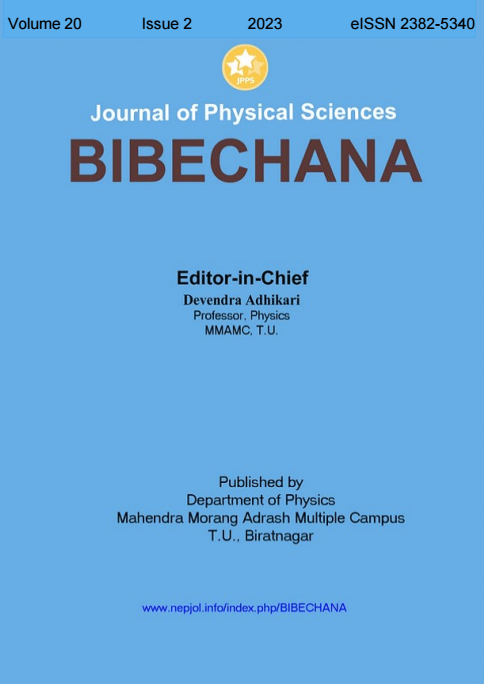In-vitro Dissolution Study of Gallstone with Medicinal Plant Extracts
DOI:
https://doi.org/10.3126/bibechana.v20i2.55865Keywords:
Gallstone, in vitro dissolution, plant extracts, combined cholesterol gallstones, black pigment gall- stonesAbstract
Background: Gallstone disease poses a substantial economic burden on healthcare systems globally, necessitating safer alternatives to current treatments like dissolution therapy and cholecystectomy. Natural compounds from plants offer a potential solution, but research on their cholelitholytic activity is limited. In vitro dissolution studies are crucial for identifying effective plant-based therapies.
Objective: This study aims to investigate the in vitro cholelitholytic activity of six plants and Ayurvedic medicines, selected based on ethnopharmacological knowledge and folk medicinal practices.
Methods: Gallstone samples were categorized as combined cholesterol gallstones (CCGS) or black pigment gallstones based on external morphology and cross-sectional analysis. In vitro dissolution studies were conducted using extracts from Bergenia ciliata, Berberis asiatica, Cuscuta europaea, Kalanchoe pinnata, Teraxacum officinale, Macrotyloma uniflorum, and Ayurvedic medicines (Cystone®, Gokshuradi, and Calcury). The samples were immersed in the extracts and controls separately and incubated in a shaking water bath. The gallstone dissolution capacity was assessed by recording the dry weight of the samples at multiple time points.
Results: T. officinale was highly effective in dissolving black pigment gallstones, while B. asiatica exhibited superior efficacy for CCGS. M. uniflorum and C. europaea also demonstrated significant dissolution activity against black pigment gallstones. However, K. pinnata was less effective for both gallstone types. B. ciliata and C. europaea exhibited equal effectiveness against both types. Ayurvedic medicine extracts were less effective compared to plant extracts.
Conclusion: This in vitro study showed the plants can dissolve GS effectively. However, the effectiveness of the plant to dissolve GS depends on the type of the stone. The findings from this study serve as a basis for further in vivo research
Downloads
Downloads
Additional Files
Published
How to Cite
Issue
Section
License
Copyright (c) 2023 Bijaya B.K., Achyut Adhikari, Gobinda Gyawali

This work is licensed under a Creative Commons Attribution-NonCommercial 4.0 International License.
This license enables reusers to distribute, remix, adapt, and build upon the material in any medium or format for noncommercial purposes only, and only so long as attribution is given to the creator.




